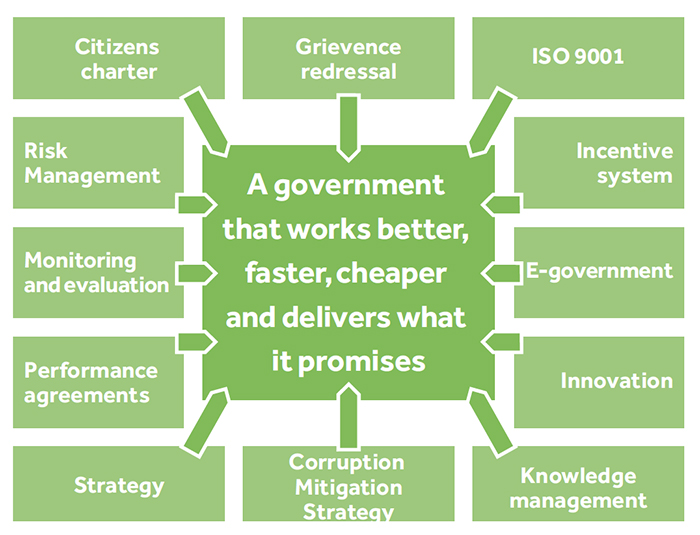
Performance Management in Government: A Primer for Leaders

Governments are complex, multi-layered organizations and, not surprisingly, government effectiveness and efficiency have many dimensions. As such, we clearly need a multidimensional approach if we wish to create a government that works better, faster and more cheaply. Our approach should also be comprehensive, covering all aspects of government performance – static, dynamic, quantitative and qualitative.
However, the diversity that exists among nations and their governments tends to obscure three key facts.
- First, many of the problems involved in managing government are a result of a few underlying causes.
- Second, the underlying causes of poor government performance are similar in nature across a diverse set of countries.
- Third, countries have successfully dealt with these (few) underlying causes using remarkably similar approaches.
Viewed in this light, the challenge of government performance management appears more manageable. Government leaders must therefore first identify the underlying causes of poor government performance and then apply proven strategies to fix these. Government leaders must not be tempted only to cure the symptoms: this represents a temporary solution at best, and the list of symptoms can be too large to fix.
The typical causes of poor government performance include:
- Fragmentation of institutional responsibility for performance management. In most countries, government departments are required to report to multiple principals, who often have multiple objectives that are not always consistent with each other. This leads to fuzziness of goals and objectives, and managers do not have a clear idea of what is expected from them.
- Fragmented responsibility for implementation. Similarly, in many countries, several important government initiatives have fractured responsibilities for implementation, and hence accountability for results is diluted.
- Selective coverage with a time lag in reporting. Some systems are selective in their coverage and report on performance with a significant time lag. Often, by the time reports are produced, both the management and the issues facing the institutions have changed.
- Most performance management systems are conceptually flawed. At the heart of an effective performance management system is an effective performance evaluation system. In most countries, performance evaluation systems suffer a handful of major conceptual flaws:
- Lack of an incentive system
- Lack of prioritization of objectives and key performance indicators
- Lack of agreement on how to measure deviation from targets
- Lack of comprehensive evaluation of organizational performance
Designing an Effective Performance Management System
So how do we design and implement performance management systems that contribute to more effective government and that avoids or minimizes the typical causes of performance failure noted above?
I compiled a toolkit, “Performance Management in Government: A Primer for Leaders,” to do just this.
This Primer is comprised of a collection of articles -- many of which were previous blog posts that reference IBM Center reports -- on aspects of government performance management inspired by the understanding that important social and economic developmental gains can be made by improving government effectiveness.
This figure summarizes the wide array of tools developed to improve government performance.
The report explains many of these tools and each are based on international best practices.
I hope these tools and the report as a whole will provoke both thought and action.
Scott, R. and Boyd, R. (2017) Interagency Performance Targets: A Case Study of New Zealand’s Results Programme. Washington, DC: IBM Center for The Business of Government.
Kamensky, J. (2017) Cross-Agency Collaboration: A Case Study of Cross-Agency Priority Goals. Washington, DC: IBM Center for The Business of Government.
Hardy, K. (2010) Managing Risk in Government: An Introduction to Enterprise Risk Management. Washington, DC: IBM Center for The Business of Government.




